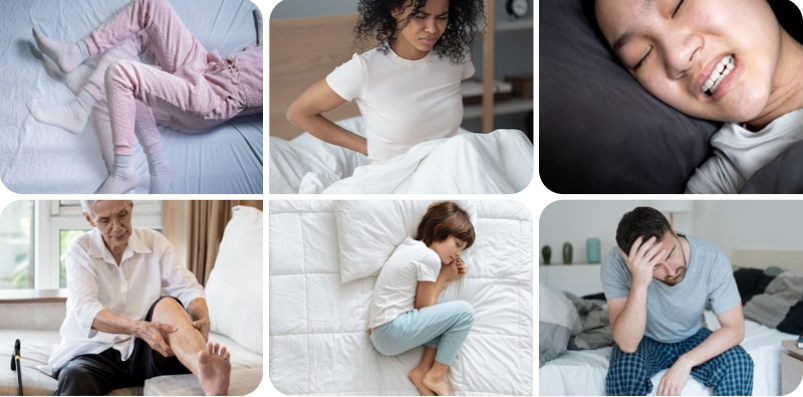Sleep-Related Movement Disorders: Rhythmic Movement Disorder
Introduction
Parents and caregivers invest a great deal of time and care into helping their babies and young children develop good sleep habits. Observing children rocking their bodies, banging their heads, or making other repetitive motions while falling asleep or during sleep is common. These behaviors can be disturbing but are usually normal and typically go away as a child grows older. If these movements cause harm, sleep problems, or continue into adolescence and adulthood, they may be considered sleep-related rhythmic movement disorder.
What Is Sleep-Related Rhythmic Movement Disorder?
Sleep-related rhythmic movement disorder consists of broad, simple, and repeated movements before or during sleep. These movements can affect the head, limbs, or entire body and may include rhythmic noises like loud humming. It is common in infancy and typically decreases with age. However, it is considered a disorder if the movements interfere with sleep, impair daytime functioning, or cause injury.
Types of Rhythmic Movements:
- Head banging: Child strikes head against mattress, pillow, headboard, wall, or crib slats.
- Head rolling: Child rolls head from side to side while lying on their back.
- Body rocking: Child rocks their entire body or upper body while on all fours or sitting up.
- Other movements: Leg banging, body rolling, leg rolling.
These movements can occur before sleep, during any stage of sleep, or while drowsy. Episodes often last less than 15 minutes.
Symptoms of Rhythmic Movement Disorder
- Repeated rocking, rolling, and banging motions.
- Disturbed sleep and daytime tiredness.
- Problems with behavior, memory, and concentration due to lack of sleep.
- Rarely leads to serious harm but can cause embarrassment and minor injuries like hair loss.
Causes of Rhythmic Movement Disorder
The exact cause is not well understood, but several theories exist:
- Self-soothing practice: A method to return to sleep.
- Underdeveloped nervous system: Controlling motor functions during sleep.
- The decrease in movements with age supports the theory of motor control development.
Risk Factors:
- Age: Most common in babies under one year old.
- Mental and emotional conditions: Higher rates with anxiety, depression, learning disabilities, ADHD.
- Family history: Observed in identical twins and triplets.
- Developmental disabilities: Linked to autism and Down syndrome.
- Other sleep disorders: Associated with sleep apnea, restless legs syndrome, narcolepsy.
Most individuals with rhythmic movement disorder have no other developmental or intellectual abnormalities.
When to Talk to a Doctor
Seek medical advice if movements interfere with sleep or could result in injury. Diagnosing involves a physical examination, medical history, sleep diary, and possibly a sleep study to rule out other conditions.
Treatments for Rhythmic Movement Disorder
- Most cases in young children do not require treatment; reassurance is often enough.
- Managing involves protecting the child’s safety (e.g., padding inside the crib).
- Treating underlying sleep disorders may offer relief (e.g., CPAP for sleep apnea).
- Serious cases may require medication.
Outlook for People with Rhythmic Movement Disorder
Most children outgrow the disorder by age 5. Treatments and coping strategies can help manage persistent cases or when the disorder develops in older individuals.
Understanding rhythmic movement disorder is crucial for parents and caregivers. Recognizing the symptoms and knowing when to seek medical advice can ensure that children receive the care and support, they need for healthy sleep habits.
“This article is not meant to cure, treat, or diagnose any health issues or disorders. It is for informational purposes only. As always, if you are experiencing any issues seek help from a professional Health Care provider before taking any medications or attempting any unsupervised treatments.”


Leave a Comment